Impact of air pollution on human health
Suganya. S*1, Lucy Grace. T2, B. Mahalakshmi3
1Infection control Nurse, Kauvery Hospital, Tennur, India 2Nurse Educator, Kauvery Hospital, Tennur, India 3Nursing Superintendent, Kauvery Hospital, Tennur, India
*Correspondence: +91 93613 88804; maha@kauveryhospital.com
Back ground
Air pollution is a common problem across the world. With the rapid development of industry, serious air pollution is being caused by the discharged industrial waste gas. In addition, automobile exhaust, industrial waste gas, indoor pollution, etc. are also the main reasons of air pollution. When various toxic suspended substances reach a high concentration in the air, they can cause serious effects on people’s bodies, such as asthma, pulmonary edema, and respiratory diseases. There are many different types of air pollutants, such as gases including ammonia, carbon monoxide, sulfur dioxide, nitrous oxides, methane, carbon dioxide and chlorofluorocarbons particulates and biological molecules.
Air pollution can cause diseases, allergies, and even death to humans; it can also cause harm to other living organisms such as animals and food crops, and may damage the natural environment. Since human perception is limited, people inhale harmful gases unconsciously. Under such circumstances, in-depth research on the impact of air pollution on human health and real-time monitoring of gases are urgently needed. The types and concentrations of gases have different effects on the human body and understanding the safety thresholds of various gases for humans is a significant step in preventing diseases.
In addition, human exhalation is an important biometric for detecting disease. Volatile organic compounds (VOC) can be produced anywhere and can reflect physiological or pathological biochemical processes. To achieve rapid treatment, detecting exhaled gas can help detect diseases quickly and accurately
Sources of air pollution
Sources of air pollution within the hospital include emissions of chemicals and microbial air pollutants from various sources such as medical and diagnostic departments, heating, ventilating, and air conditioning systems, personal and service vehicles on the premises of the hospital, renovations going on in the hospital itself and traffic outside the main building of the hospital. Outside, the hospital is surrounded by residential buildings on three sides, while on the fourth, there is a road for vehicular traffic.
Outdoor sources
The outdoor sources include vehicle emissions, industrial, and construction activities. Toxicity of particulate matter (PM) depends greatly on their size, less than 10 or 2.5 microns (PM10 or PM2.5) considered especially dangerous since they can easily penetrate the lungs into the alveoli.
Sources of the outside-air pollution
- The burning of fossil fuels
- Industrial emission.
- Wildfires.
- Microbial decaying process.
- Transportation.
- On burning of garbage waste
The burning of fossil fuels
It releases large amounts of carbon dioxide, a greenhouse gas, into the air. Greenhouse gases trap heat in our atmosphere causing global warming.
Air pollution from burning fossil fuels can cause multiple health issues including asthma, cancer, heart disease, and premature death. Combusting the additives found in gasoline—benzene, toluene, ethyl benzene, xylene—produces cancer-causing ultra-fine particles and aromatic hydrocarbons.
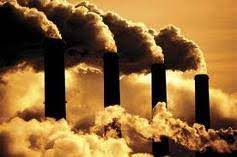
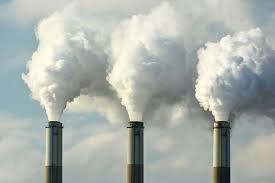
Industrial emission
Industrial pollution affects the health of people living near the industries. The release of waste chemicals in the rivers is a major cause of water pollution and it causes the death of aquatic living organisms. Solid wastes such as pieces of metals dumped into the soil are responsible for soil pollution
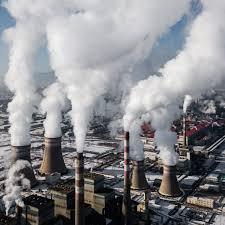
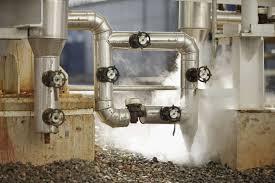
In-door pollution
Household air pollution is generated by the use of inefficient and polluting fuels and technologies in and around the home that contains a range of health-damaging pollutants, including small particles that penetrate deep into the lungs and enter the bloodstream.
Wildfires also simultaneously impact weather and the climate by releasing large quantities of carbon dioxide, carbon monoxide and fine particulate matter into the atmosphere. Resulting air pollution can cause a range of health issues, including respiratory and cardiovascular problems

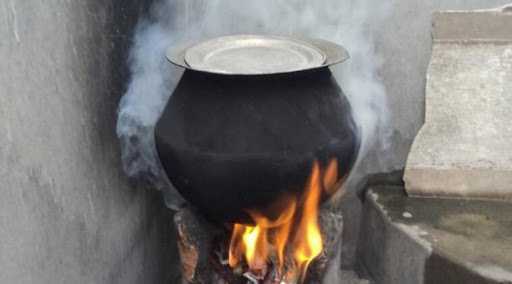
Microbial decaying process
Microbiology of decomposition is the study of all microorganisms involved in decomposition, the chemical and physical processes during which organic matter is broken down and reduced to its original elements. As oxygen is available at the beginning of decomposition, aerobic microorganisms flourish and quickly deplete the oxygen. Anaerobic bacteria can then proliferate in the body. Later in the decomposition process, fungi and bacteria from the environment will also become involved in the process.
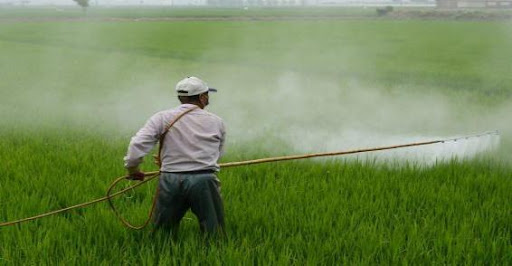
Transportation
The transportation sector also contributes to emissions of air toxins which are compounds that are known or suspected to cause cancer or other serious health and environmental effects. Through the emissions from combustion of fossil-derived fuels, transportation systems contribute to degraded air quality, as well as a changing climate. Transportation also leads to noise pollution, water pollution and affects ecosystems through multiple direct and indirect interactions.




Burning of garbage waste
Burning trash can cause long-term health problems. Burning prohibited materials such as garbage plastic and painted or treated wood is harmful to the environment because these materials release toxic chemicals that pollute our air. Some of the most dangerous chemicals created and released during burning are those from burning plastics such as dioxins which are byproducts formed when chlorine-containing products are burned. Even if certain types of plastic (such as polyethylene or polypropylene) do not contain chlorine other materials attached to or burned with the plastic may be a chlorine source. Polluted air can be inhaled by humans and animals and deposited in the soil and surface water and on plants.
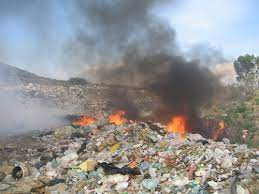

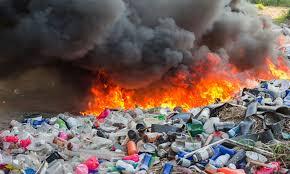

Indoor sources
The indoor sources include office equipment (such as printers, fax machines, and photocopiers) cleaning equipment and products ventilation systems, and personal activities. Although smoking is considered an important source of indoor air pollution most or all HCF are smoke-free.
Mercury can be used in thermometers, blood pressure cuffs, thermostats, fluorescent lights, and other products found in hospitals. At room temperature, elemental mercury is a liquid and emits toxic vapors, which can be inhaled into the lungs and absorbed into the bloodstream. Mercury is very toxic to humans.
Why should hospitals reduce air pollution
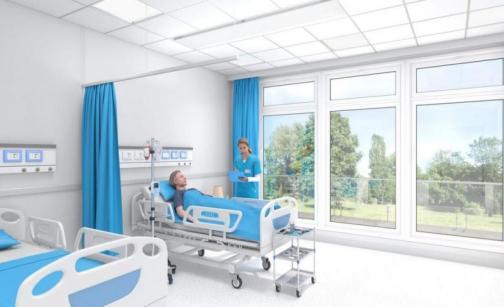

People who are exposed to toxic air pollutants at sufficient concentrations, for sufficient duration, may increase their chances of getting cancer or experiencing other serious health effects such as reproductive problems, birth defects and aggravated asthma. Hospitals are facilities that engage in providing general medical, surgical and specialty services. Equipment breakage and waste incineration may release pollutants into the air and may contribute to health concerns in hospitals and in the community. Hospitals implement pollution prevention strategies not only to help comply with federal, state, and local laws but also to further minimize impacts on human health and the environment.
What kinds of air pollutants may come from hospitals
Hospital operations can produce emissions of toxic air pollutants such as mercury and dioxin. Mercury can be used in thermometers, blood pressure cuffs, thermostats, fluorescent lights, and other products found in hospitals. At room temperature, elemental mercury is a liquid and emits toxic vapors which can be inhaled into the lungs and absorbed into the bloodstream. Mercury is very toxic to humans. It impacts the kidneys, liver, respiratory system, and central nervous system.
It can also reach outdoor air through the incineration of mercury-containing products Polyvinyl Chloride (PVC) PVC is used in plastic products such as IV bags, surgical tubing, other medical supplies and construction materials. PVC is a source of toxic air pollutants when incinerated. Some hospitals incinerate their waste onsite.
How can hospitals reduce air pollution?
Making changes in hospital operations can stop pollutants at the source and increase efficiency. By evaluating and improving work practices hospitals can decrease emissions reduce operational costs and protect employee and public health.
Examples of changes in work practices that help reduce air pollution include: replacing sources of Mercury, use of alternatives to mercury thermometers, mercury blood pressure cuffs and other equipment, switching to mercury-free preservatives, insisting on using recovered and recycled mercury in all products that do not yet have mercury-free alternatives , using a mercury audit on a regular basis to locate sources of mercury, and formulating a plan to reduce sources of mercury in heating and ventilation
Indoor air quality levels
The complex hospital environment requires special attention to ensure a healthy indoor air quality (IAQ) to protect patients and healthcare workers against hospital-acquired infections and occupational diseases. Poor hospital IAQ may cause outbreaks of building-related illness such as headaches, fatigue, eye and skin irritations and other symptoms.
Carbon monoxide (CO) is extremely toxic and combines with hemoglobin to form carboxyhaemoglobin (COHb), which reduces the oxygen supply to body tissues. At elevated levels, symptoms of exposure include headaches, decreased alertness, nausea, fatigue, rapid breathing, chest pain, confusion, and impaired judgment.
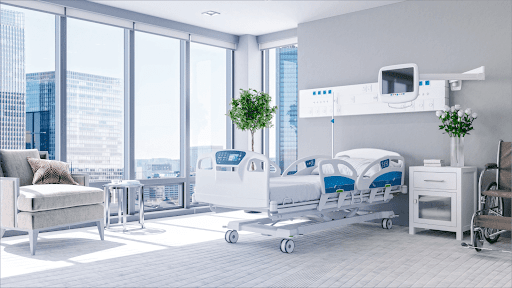

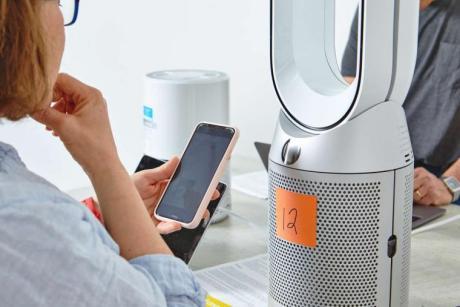

Why IAQ check is important, particularly in hospitals?
Generally, in buildings, HVAC systems have the role to provide adequate physical comfort conditions and perceived air quality to users through fresh and conditioned air supply, heat removal and pollutant dilutions. In hospitals, the services of HVAC system extend beyond this and should also serve to prevent cross-infection risks, harmful emissions and pathogen spreading. Thus, in a hospital, the HVAC system does far more than keep occupants comfortable. It also serves a critical function in patient’s health, well-being & creates a healing environment. Maintaining an environmental quality standard in hospitals is a challenge as there are several factors influencing the internal spaces. These could be related to design or equipment or occupants or all of them together.
Complex composition of departments
Hospitals have various departments with different functions. Along with this, the HVAC design criteria for healthcare facilities vary as much as the medical services provided. The various departments which are inter-connected would require different air distribution systems according to the varied medical services they provide.This could be managed with several configurations in the HVAC system within the hospital.
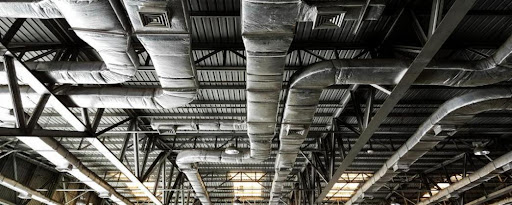

The complex hospital environment requires special attention to ensure a healthy indoor air quality (IAQ) to protect patients and healthcare workers against hospital-acquired infections and occupational diseases.
Ventilation requirements are on the basis of the standards of air quality for hospitals. The standards give the values for the temperature, relative humidity, air change rates, types of filters, the pressure relationship to adjacent areas and the cases where re circulation of air is allowed. All these requirements are classified according to the purpose of the premises to meet the requirements of patients, staff and to resist the contaminant.
Heating ventilation and AC systems
In modern hospitals, heating, ventilation and AC (HVAC) systems control the concentration of airborne particulates in high-risk areas such as transplant units, OTs, ICUs, and burn units to minimize the risk of infection by means of air pressure, flow control and air filtration
The three types of filtration used in central AC: Coarse or pre-filters for large particles Micro-fine filters which filter up to 5 microns HEPA filters which keep out up to 0.3 microns with 99.97% efficiency.
Efficient air filters in improving the air quality


Air filters are known as effective devices to resist particle transmissions and trap particles in AHU systems. Preventing particles from entering the critical area is achieved with one or more stages of filtration. Minimum efficiency reporting values (MERV) are based on the method of testing described in ANSI/ASHRAE Standard 52.2: Method of Testing General Ventilation Air-Cleaning Devices for Removal Efficiency by Particle Size. The mechanisms by which particles are removed by fibrous filters are direct impaction, sieving (straining), interception and diffusion
A hospital is most acutely affected by indoor air pollution. Air quality in hospitals increases the risk of infections in visitors and staff. Regular indoor air quality checks in hospitals can aid in patients’ speedy recovery and maintain the medical staff’s health. The installation of air quality control devices is essential for hospitals.
Indoor air can be as polluted as outdoor air. It comprises particles like dust mites, pollen, carbon fibers, pet dander, etc., and odors such as VOCs (volatile organic compounds) from paints, varnishes, smoke, cooking, etc. The World Health Organization (WHO) attributes nearly 38 lakh deaths worldwide to indoor air pollution annually. The common reasons associated with these include:
Commonly used products like ink jet printers, cleaning agents, etc., may cause allergies, asthma and other respiratory disorders due to daily usage indoors. Prolonged exposure to air pollution often leads to low productivity at work absenteeism and reduced alertness. In the case of students, it also adversely impacts their educational development. Poor infrastructure and management also result in polluted indoor air and is a cause of sick building syndrome (SBS), which causes (chronic) symptoms like irritation in the eyes, nose and throat.
Indoor plants do not reduce the amount of particulate matter in the air with severe impacts of regular ambient air pollution and hospital admission, patients and visitors at hospitals are more vulnerable to contracting nosocomial Infections. It is essential to improve the air quality in hospitals. Covid19 is a significant indicator of aerosols contributing to viral infections affecting public health, including deaths.
Primary steps to reduce the IAQ levels
Proper ventilation and management of humidity levels inside the hospital wards can help bring indoor air pollution levels down significantly.
Early identification of pollutants inside hospital premises and reduced PVC usage must be implemented. Maintenance of cooling towers can prevent the emission of harmful water vapor in the indoor air which may serve as a common culprit for an upsurge of diseases. Let’s delve into the different categories of air purifiers available in the market.
Standalone air purifiers
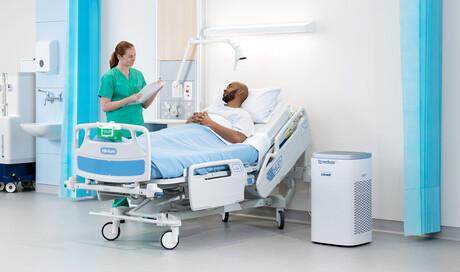

High-efficiency particulate arrestors are mechanical filters that clean allergens like pollen animal skin and dander.
They use UVC to sterilize air. Ozone air purifiers produce Ozone gas that helps deactivate bacteria, viruses and other harmful microorganisms.
VAC systems
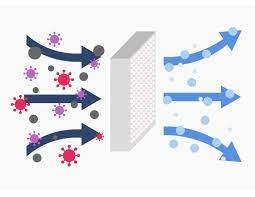

Ventilation and Air-Conditioning Systems(VAC) require regular cleaning and periodic replacement of MERV filters. These are effective indoors but might not be enough as they do not tackle viral load to the best extent.A mix of different air purifying systems is needed to protect hospitals.
UV air purifier
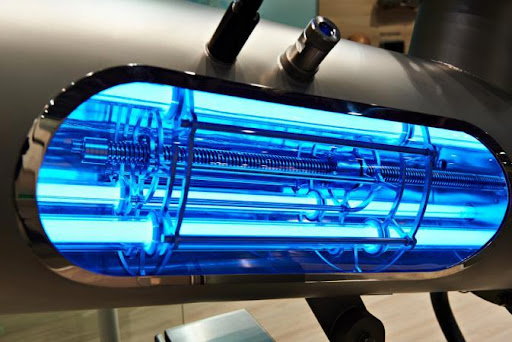

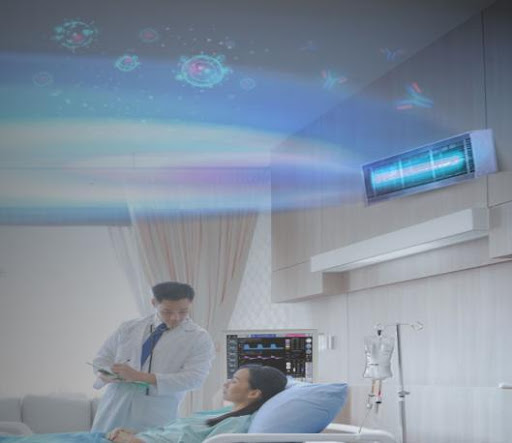

Use UV light to pass air through a filter. However, they do not treat VOCs effectively when used with HEPA filters, UV air purifiers emit Ozone gas which causes throat irritation, chest pain, etc..
Ionizer air purifiers: They target gaseous and particulate pollutants that get clumped together when negatively charged and precipitate. It generates a harmful greenhouse gas, Ozone.
Activated carbon air purifiers: The activated carbon filters absorb the displeasing odors and gases and nullify the smoke effects. These filters last six months and work in combination with other filters. They do not remove ordinary dust particles from the air and are used in conjunction with a MERV filter.
Pulsed radio wave air cleaners
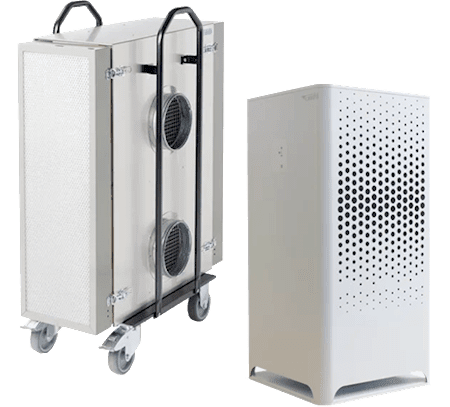

These new air cleaners use pulsed radio waves in the WIFI spectrum to accelerate the natural clearance of certain pollutants in the air. It does not require passing air through several filters before delivering clean air into the enclosed spaces. Typically, they do not require any maintenance.As hospitals have a variety of pollutants a mix of technologies is deployed across different areas across facilities. MERV Filter-based air purifiers for rooms and waiting regions and pulsed radio waves technology for Genet and outdoor spaces can offer a competitive advantage against invisible dust and viruses harmful to human health.
Conclusion
Our earth is moving on the way to unhealthy future for every living being. So we must become aware of the factors that pollute our environment and take some necessary steps to keep our future safe and healthy. Air pollution monitoring system is a revolutionary solution that can provide accurate and real-time data about the air quality in a particular area. It can help identify the sources of pollution and take necessary measures to reduce it, protecting the environment and human health. Air pollution is contamination of the indoor or outdoor environment by any chemical, physical or biological agent that modifies the natural characteristics of the atmosphere. On an individual level the risk to health from air pollution is very much smaller than that posed by active cigarette smoking or accidents. Household combustion devices, motor vehicles, industrial facilities and forest fires are common sources of air pollution. Many countries heart disease is a leading cause of death and even a small contribution from air pollution could mean a significant and important effect on public health.


Ms. S. Suganya
Infection control Nurse (ICN)


Ms. T. Lucy Grace
Nurse Educator


Ms. B. Mahalakshmi
Nursing Superintendente

